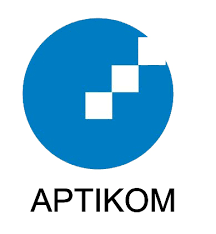Community perspective analysis of Yogyakarta special region using K-means algorithm
DOI:
https://doi.org/10.18196/eist.v5i2.24729Keywords:
Yogyakarta, Data Mining, K-Means Algorithm,Abstract
This study explores community perspectives on Yogyakarta, a culturally rich region in Indonesia known as "Jogja Istimewa," "Student City," and "City of Tourism." Given the potential challenges faced by the region, the research employs the K-Means Algorithm to analyze opinions gathered from Twitter, offering a novel alternative to traditional surveys. Using a data crawling method, relevant tweets about Yogyakarta were collected and processed through preprocessing and TF-IDF to enhance word significance. The findings reveal diverse community views regarding job opportunities, culture, tourism, religious activities, stakeholder involvement, and security. The application of K-Means clustering effectively highlights the multifaceted perspectives of Yogyakarta's residents, providing valuable insights for understanding the region’s socio-cultural dynamics.
References
A. A. Prakoso, “Identifikasi dan Pentahapan Zona Aktifitas Wisata Pantai Selatan DIY,” Arsit. dan Perenc., vol. 1, no. 2, pp. 240–249, 2018.
A. P. Sambodo and D. W. Utami, “Potential Use of Student’s Travel Pattern for Integrated Transportation System Planning in Yogyakarta,” in ASEAN/Asian Academic Society International Conference Proceeding Series, 2019, pp. 442–447.
S. Issundari, Y. M. Yani, R. W. S. Sumadinata, and R. D. Heryadi, “From Local to Global: Positioning Identity of Yogyakarta, Indonesia through Cultural Paradiplomacy,” Acad. J. Interdiscip. Stud., vol. 10, no. 3, p. 177, 2021.
M. Putri and M. S. Drajat, “Kampung Bule sebagai City Branding Kota Yogyakarta,” Pros. Hub. Masy., pp. 143–149, 2018.
U. A. Muhsin and G. J. Adikara, “Analisis framing pemberitaan klithih pada media lokal Harian Jogja,” Lekt. J. Ilmu Komun., vol. 7, no. 1, 2024.
M. Geller, V. V Vasconcelos, and F. L. Pinheiro, “Toxicity in Evolving Twitter Topics,” in International Conference on Computational Science, 2023, pp. 40–54.
N. E. Nugraha and S. T. Anugraputri, “Finding justice in cyberspace: the wickedness of online gender-based violence (GBV),” J. Wan. dan Kel., vol. 3, no. 1, pp. 27–36, 2022.
B. Sarwono, “Menelisik Dorongan Agresi Para Pelajar Pelaku ‘Klithih’ di Yogyakarta,” Solut. J. Couns. Pers. Dev., vol. 1, no. 1, pp. 58–70, 2019.
P. Analisa, D. A. N. Klasifikasi, C. Di, A. Rifa, G. G. Setiaji, and V. Vydia, “PENGGUNAAN METODE K-MEANS Fakultas Teknologi Informasi dan Komunikasi, Universitas Semarang,” vol, vol. 15, pp. 43–47.
Y. Mayona, R. Buaton, and M. Simanjutak, “Data Mining Clustering Tingkat Kejahatan Dengan Metode Algoritma K-Means (Studi Kasus: Kejaksaan Negeri Binjai),” J. Inform. Kaputama, vol. 6, no. 3, pp. 2548–9739, 2022.
D. N. P. Sari and Y. L. Sukestiyarno, “Analisis cluster dengan metode K-Means pada persebaran kasus COVID-19 berdasarkan Provinsi di Indonesia,” in PRISMA, Prosiding Seminar Nasional Matematika, 2021, vol. 4, pp. 602–610.
A. M. Zuhdi, E. Utami, and S. Raharjo, “Analisis sentiment twitter terhadap capres Indonesia 2019 dengan metode K-NN,” J. Inf. J. Penelit. dan Pengabdi. Masy., vol. 5, no. 2, pp. 1–7, 2019.
A. Ikhwan and N. Aslami, “Implementasi Data Mining untuk Manajemen Bantuan Sosial Menggunakan Algoritma K-Means,” J. Teknol. Inf., vol. 4, no. 2, pp. 208–217, 2020.
K. Kharisma and U. S. Aesyi, “Analisis Tingkat Kebermanfaatan Mypertamina Menggunakan K-Means Clustering,” J. Inf. Syst. Manag., vol. 4, no. 2, pp. 91–96, 2023.
P. Y. Saputra, “Implementasi teknik crawling untuk pengumpulan data dari media sosial Twitter,” Din. Dotcom, 2017.
T. K. Deo, R. K. Deshmukh, and G. Sharma, “Comparative Study among Term Frequency-Inverse Document Frequency and Count Vectorizer towards K Nearest Neighbor and Decision Tree Classifiers for Text Dataset,” Nepal J. Multidiscip. Res., vol. 7, no. 2, pp. 1–11, 2024.



